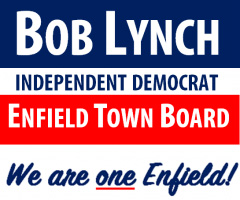Lawmakers slash County Administrator’s recommended taxpayer subsidy by more than half
by Robert Lynch; October 4, 2025
It was a long meeting. And it was a meeting made long in large part this past Thursday because a committee of the Tompkins County Legislature held a protracted debate over funding the local airport.
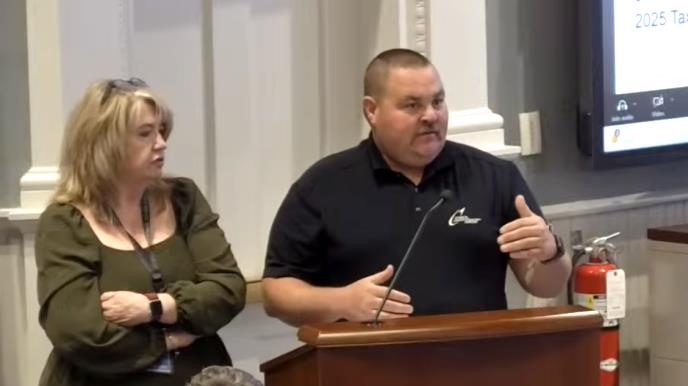
In what’s emerged as the most controversial plank of Administrator Korsah Akumfi’s recommended $240 Million 2026 Tompkins County Budget, the Legislature’s “Expanded Budget Committee”—in essence, a 14-person committee-of-the-whole—that night slashed Akumfi’s recommended $1.97 Million operational subsidy to the Ithaca-Tompkins International Airport to just $853,200, a mere 43 percent of what the Administrator had recommended.
“Don’t shoot me. We don’t need the airport. We don’t need it. It’s not a life-or-death situation,” the Ithaca Town’s Amanda Champion most memorably stated at the October 2 session.
Champion would have gone farther than would have anyone else. She would have erased the airport’s subsidy to zero. But when Champion’s amendment came to a vote, only she supported it.
Thursday’s series of committee votes, with plenty of talk sandwiched in-between them, ate up just 18 minutes short of two hours’ time, roughly half the length of the meeting.
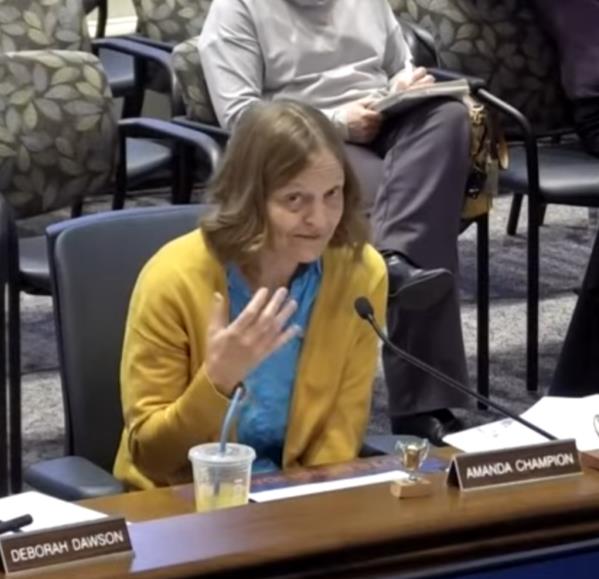
In his budget presentation to the Legislature September 2, County Administrator Akumfi had proposed a new, $1,971 annual operating subsidy to the financially-ailing, passenger-starved airport not only for 2026, but also for the following two years. Future years’ subsidies won’t be addressed until planning for those later budgets arrives starting next fall.
Pumping a nearly $2 Million subsidy into the airport, Akumfi’s September budget message maintained, would improve the facility’s competitiveness, attract new passenger routes and “immediately lower fares.”
“ITH (the local airport’s three-letter flight designation) faces rising competitive pressures from nearby airports that subsidize airline routes and from the ongoing challenge of passenger leakage to Syracuse, Rochester, and Elmira,” the Administrator’s message stated. “Without targeted support, ITH risks losing service, raising costs for residents, and weakening its role as a driver of tourism and economic development,” he stated.
But subsidizing the airport with taxpayer funds takes money away from other priorities. And although they’ve yet to set a formal number, legislators have tacitly rallied around Administrator Akumfi’s recommendation that would contain next year’s property tax levy increase to 4.5 percent, an increase still higher than it’s been for any recent year.
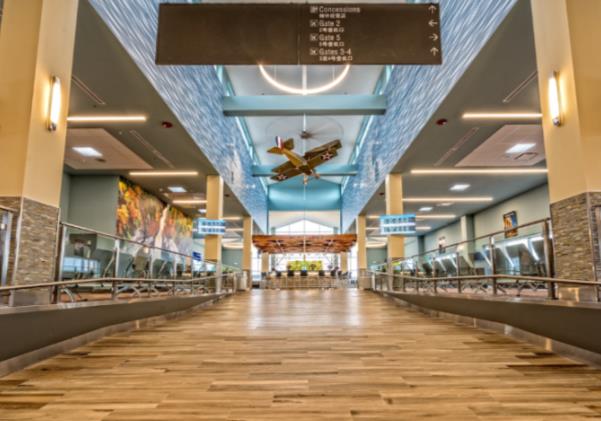
With far less fanfare, and a lesser consumption of time, legislators during their Thursday meeting addressed one of those other priorities competing with the airport for attention. By a vote of 12-2, the committee recommended $500,000 increased funding for Tompkins Consolidated Area Transit, the TCAT bus service.
Newfield-Enfield legislator Randy Brown joined Republican colleague Lee Shurtleff in opposing the half-Million dollar increase to TCAT. Brown had proposed reducing the amount to $250,000. No other legislator supported Brown’s proposed compromise.
Some would classify everything the Expanded Budget Committee did this past week as an exhaustive exercise of legal fiction. The committee’s recommendations carry no finality. Legislators must still meet as a Legislature, not just as a committee, and make the budget changes official. But since every one of the 14 we’ve elected sat around the big, oval desk Thursday evening, it would take a giant change in collective opinion to reverse the recommendations the committee made.
When the proposed 2026 Budget exits committee and heads to the floor later this month, at least based on past practice, adjustments will focus on big-picture issues like tax rates and fund balance savings, not on more granular items like airport appropriations. Such past squabbles are usually considered settled.
“At least from my constituents, I heard very loud that they did not want the funding for the airport to come out of our tax levy,” legislator Shawna Black asserted as she began the multi-amendment process to strip away much of what the airport had requested.
Perhaps overcomplicating an otherwise straightforward analysis in his attempt at salesmanship, Akumfi had recommended tapping the new airport subsidy from three different funding sources. In reality, it’s more like two. And any observer needed to keep a scorecard Thursday night to determine from which of those several pots the airport money would be taken and from which it would not.
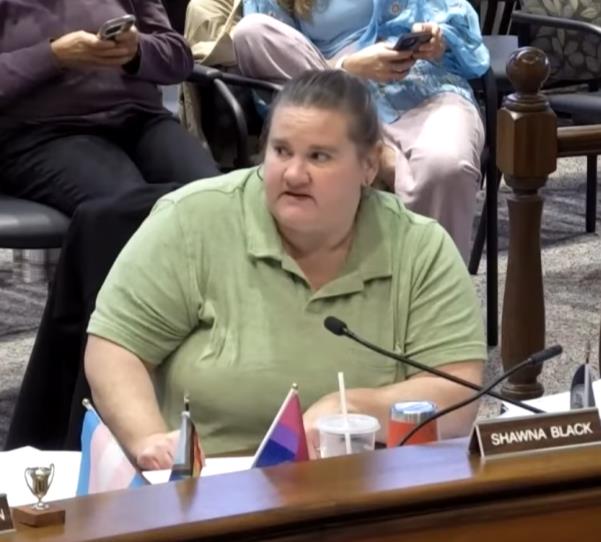
First, by an eight-to-six vote, the committee removed the $371,000 portion of the subsidy that would have come directly from the property tax. Then, with 12 votes in favor and just two opposed, it deleted another $500,000 that would have been drawn from projected, newly-increased hotel room tax revenues that are expected to grow by newly-imposing that tax on short-term rentals, like Airbnb availabilities.
The $853,200 subsidy finally agreed-upon, at least in theory, would come from sales tax receipts, also expected to generate from their new imposition on short-term rentals. But again, that’s a legal fiction. And even Lansing legislator Deborah Dawson, arguably the most fiscally-astute budget watchdog among the 14, got tripped up as the meeting wore on.
Dawson repeatedly asked whether the airport money was coming from the tax levy or the sales tax. As Administrator Akumfi tried to explain, but with limited success, it really doesn’t matter. Sales taxes, however much they might grow, still roll into the budget’s General Fund. And when those other fiscal sources run dry, the property tax makes up the difference.
Akumfi had proposed $1.1 Million of that projected sales tax money be syphoned off for airport aid. The amount’s reduction to $853,200—an odd number chosen for a reason—passed by a vote of ten-to-four. Amanda Champion, Shawna Black, Deborah Dawson, and Legislature Chair Dan Klein opposed the reduced amount, though perhaps for differing reasons. Black had wanted only a half-Million dollars spent. Champion would have spent no money at all.
Why the airport subsidy is needed in the first place equates to nothing less than a high-stakes competitive gamble. And local airport officials admit that fact.
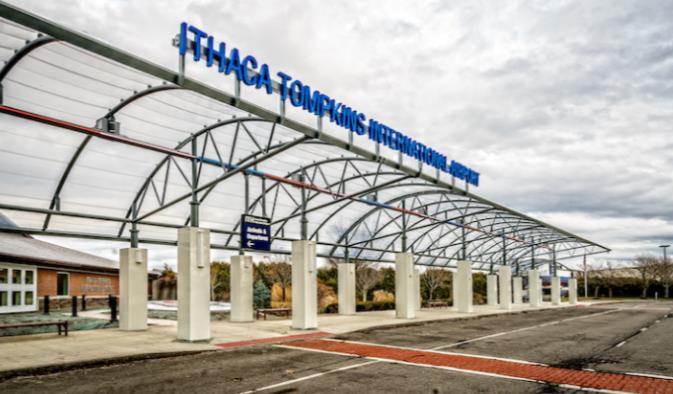
“The $1.9 Million that we did ask for will help to make us more competitive;” Roxan Noble, Airport Director, defended her request before lawmakers began chipping it away. “That’s the goal, so that our cost per enplanement is down to something that the airlines are looking for so we can bring in additional service; so we can continue to maintain service we have.”
The Ithaca-Tompkins Airport—truly “International” in name only—has shed much of its service post-pandemic. American Airlines has left for good. There were once perhaps a dozen daily commercial flights into this airport, someone said at the meeting. Now there’s just a fraction of that number.
And when airports negotiate with airlines, officials advised the committee, the “cost-per-enplanement” (CPE) metric becomes key. It’s a per-passenger charge the airport assesses upon airlines to cover its costs. Therefore, the larger the taxpayer subsidy, the lower the imposed CPE.
“CPE is a hypothetical number of all of our cost factors that go through the airport,” Josh Nalley, Airport Deputy Director, advised the committee. And to Nalley, a $15 CPE is the sweet spot, about half of where the local CPE stands at present.
“If we can’t get to that $15 mark, we’re not getting new service,” Nalley cautioned the committee. “If we’re higher than what we are, we have the chance of potentially losing that service. If we lose airline service, then we are looking for a lot more money to keep the airport open,” Nalley said.
Noble and Nalley estimate it would take the whole $1.97 Million annual subsidy to lower the CPE to that magic $15. What the committee recommended Thursday would only maintain the CPE at its present $30.41 level (hence the odd, $853,200 number, based on administrative calculations).
But even were the full subsidy granted, nothing’s assured.
“There’s no guarantee, is there, that if we cut it to 15, you’re going to get added flights?” a skeptical Deborah Dawson asked.
“There’s not a guarantee, unfortunately. That’s business, right? There’s never a guarantee when you’re trying to operate a business,” Nalley admitted. “But we’re not even in the conversation now.”
“So far it’s a definite ‘No,’ but the money doesn’t make it a definite ‘Yes,’” Dawson pressed further.
“Correct,” Nalley conceded.
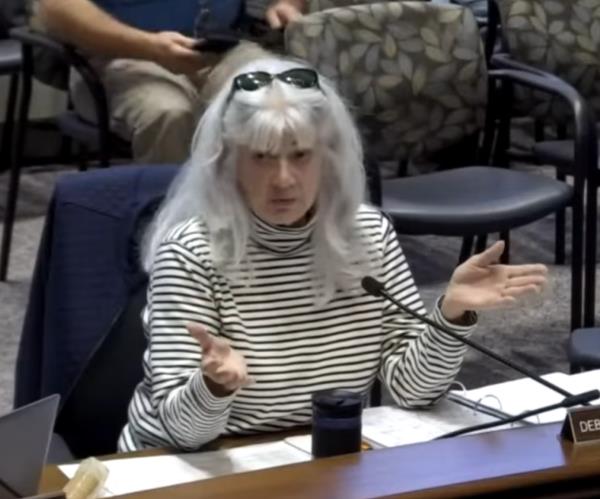
Anecdotal evidence shared at the meeting suggested that as many as 40 percent of those who could fly out of the local airport bypass it and drive to larger nearby cities like Syracuse, probably because the air fares there are cheaper.
So it begs to be asked, could a subsidy-driven lower CPE cut airline ticket prices? Legislator Lee Shurtleff had posed that question to Noble at a prior committee meeting, September 18.
“Fares are very tricky,” the Airport Director answered Shurtleff at the time. “Air fares make no sense.”
“The airport is an economic driver for Tompkins County,” Budget Committee Chair Mike Lane insisted at this most recent session. “We know we are centrally isolated here. We have no connection to the interstate highway system,” Lane reminded colleagues. “We know over the years when people have been looking to come into Tompkins County,” given the presence of Cornell University and the local colleges, “that they are interested in being able to have air service to get in and out.”
“We have to support the airport,” Newfield’s Randy Brown maintained. “We have no choice. We have bills to pay. We have to pay the bills.”
But members more critical of the taxpayer subsidy argued budget night that without any binding promises from the airlines, underwriting airport operations with public moneys effectively places those dollars, albeit indirectly, into the air carriers’ corporate pockets.
Two nights earlier, at a Legislature-sponsored “public forum” on the proposed 2026 Budget, one that drew an abnormally large number of attendees, many speakers targeted the proposed airport appropriation as the first and best place to cut.
Reducing or removing the subsidy, many then argued, would free up money for social programs and other services, including aid for local arts and cultural organizations, for the County Library, for TCAT, and most often mentioned, for OAR (“Opportunities, Alternatives, and Resources”) an outreach service for the previously-incarcerated.
“You’re trying to fund the airport? You’re joking, right?” Kirk Rosenfeld, a former eight-year prison inmate and an OAR supporter, asked at the September 30 forum. “Like, it’s an airport. We’re talking about people’s lives… not flying planes,” Rosenfeld continued. “We can’t afford airports. We can’t afford a plane ticket. We’re trying to get food. We’re trying to get warmth, heat.”
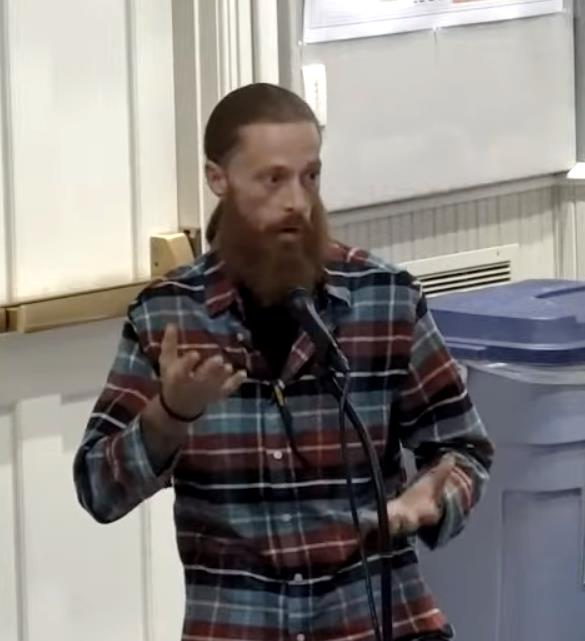
Messages like that his were not lost on legislators like Champion, who went the farthest during the committee session with her call for slashing the subsidy to nothing.
“It’s nothing personal. It’s not about the airport,” Champion insisted before casting her lone vote to zero-out any appropriation. “I feel like that future money (the projected Airbnb short-term rental windfall) could be used to help people and not the airport,” Champion argued.
“I think we should factor in what it would cost to put a ‘closed’ sign in front of the airport,” Dryden legislator Greg Mezey responded to Champion’s scorched-earth idea, “because that essentially is what that does.”
“I don’t think we’re as broke as people say we are,” Mezey maintained.
“I’m a believer in either set ‘em up for success,” Mezey said of the airport, “or let’s stop the conversation and move on and realize that we all just put the nail in the coffin of our airport and get what we get.”
“This is a race to be the small regional airport,” Mezey maintained. “The race is on between us, Elmira, Binghamton, these other places that are not in these major metro areas.” The committee was told Binghamton had just lately pumped millions into its own facility in hopes of luring a low-cost airline.
And with the County Administrator’s $1.9 Million recommended airport subsidy cut to $853,200, the Expanded Budget Committee moved on. It will reconvene Monday, October 6, and possibly a third time, Wednesday, the 8th, before the amended budget is hammered into pretty much final shape… at least, final enough to take it before a formal Legislature session and then to a Public Hearing.
The airport appropriation could be amended yet again, once lawmakers take the weekend to mull it over. But what stands now is a loss to Roxan Noble and to those, like legislator Mezey, who’d hope Ithaca would overtake places like Elmira and Binghamton. The net winners from Thursday night’s budget adjusting could be those human service agencies who’d hope to gobble up the money that the airport would have otherwise gotten.
Shortly before the committee’s adjournment, the big screen showed a running tax levy increase of 4.74 percent. The soft target is 4.5 percent. Legislators still have a ways to go.
###
